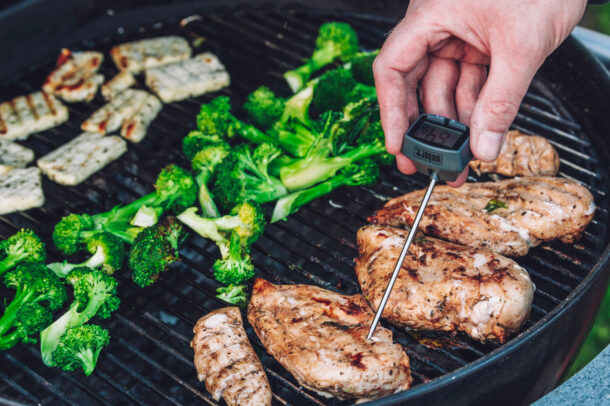Written by Cheryl Jitta, RD, Bureau of Microbial Hazards, Health Canada
To reduce the risk of foodborne illness (also known as food poisoning), it is essential to follow safe food handling and cooking practices. Follow the four food safety steps of clean, separate, cook and chill while handling and preparing food to help you to avoid complications from foodborne illness.
Clean
Wash your hands before preparing and eating food with soap and water for at least 20 seconds. Be sure to wash your hands after you touch raw meat, poultry, fish, seafood or eggs, after you touch the garbage, your hair, your phone or your pet and after you use the washroom or change a diaper.
Be sure to clean the kitchen with dish soap and a clean dishcloth. Then sanitize the kitchen. This includes countertops, cutting boards, sink and faucet, digital food thermometer and utensils such as can openers, knives, spatulas, tongs.
Here are the steps to sanitize:
- Combine 750 mL (3 cups) of water with 5 mL (1 tsp) of bleach in a labeled spray bottle.
- Spray the bleach solution on the surface or utensil and let stand briefly.
- Rinse with lots of clean water and air dry or use clean kitchen towels.
Wash your hands. Now that they are clean, it’s time for food preparation. Start by rinsing the produce, but don’t use soap. Gently rinse delicate produce like apples, pears, cucumbers and mushrooms under cool running water. Scrub firm produce like cantaloupes, potatoes with a clean vegetable brush under cool running water.
Separate
When preparing meals an important food safety tip to keep in mind is ‘separate’. This means don’t cross contaminate from raw food to cooked food. Keep raw meat, poultry, fish, seafood and eggs separate from cooked and ready-to-eat food because they could be contaminated with microorganisms that could cause foodborne illness.
Raw foods need to be cooked to safe internal cooking temperatures to be safe to eat. This is important for everyone, but especially important for vulnerable populations. Here are some tips to help you ‘separate’ to avoid cross contamination in your kitchen:
- Don’t rinse raw poultry or meat since rinsing spreads bacteria around the sink, countertops, faucets, nearby dishes, the wall, the cupboards and anywhere the water spray lands or anywhere your contaminated hands touch.
- Use different coloured cutting boards, for example, use a red cutting board for raw meat and green cutting board for washed produce. If you only have one cutting board, knife or platter, just be sure to wash and sanitize them between uses.
- Wash cutting boards after using them with raw meat, poultry, fish and seafood and before reusing it for washed produce or cooked food.
- Make sure that once a marinade has touched raw meat, poultry, fish or seafood it is thrown out because it is now contaminated. If you know that you want to use some marinade on the cooked food, set some aside before it touches any raw food.
Cook
Cooking foods properly is one of the best ways to make sure that it is safe to eat. Bacteria like E. coli, Salmonella and Listeria, that naturally occur in food, are killed by heat. Check that your food has reached a safe internal temperature by using a digital food thermometer.
When using a digital food thermometer:
- check each piece of food, since pieces may vary in size
- use clean tongs to take a piece of food off the heat to a clean plate to check the temperature
- insert food thermometer through the side of thin food, like a burger patty or chicken breast
- insert the thermometer through the thickest part of the meat, all the way to the middle, not touching any bone for large cuts of meat, like a whole chicken or a roast
- clean the food thermometer between uses according to manufacturer’s instructions
Keep hot food hot at or above 60°C (140°F) before serving. Remember, bacteria grow rapidly when food is allowed to sit in the ‘danger zone’ which is between 4°C (40°F) and 60°C (140°F).
Leftovers also need to be reheated properly and that means to an internal temperature of 74°C (165°F). Bring gravy to a full, rolling boil and stir a few times while reheating for even heat distribution.
Chill
It’s important to keep cold food cold, so that your food never reaches the temperature danger zone which is between 4°C (40°F) to 60°C (140°F). The danger zone is where bacteria can grow quickly and cause foodborne illness. When you are grocery shopping plan to buy refrigerated and frozen food last. Pack cold and frozen food together in the same reusable bags or bins to help them stay cold. Use insulated bags or a cooler with frozen ice packs to take your food home. Go directly home, do not take your food with you on other errands.
When you get home, put away groceries that belong in the fridge and freezer right away. Make sure your refrigerator is set at 4°C (40 °F) or lower and your freezer at -18°C (0°F) or lower.
For eggs, refrigerate them in their original container in the main part of the fridge where it’s cold. Store raw meat, poultry, fish and seafood in different containers on the bottom shelf of your refrigerator so raw juices won’t drip onto or touch other foods.
For fresh vegetables and fruit, put the ones that need to go in the fridge, like pre-cut and ready-to-eat produce such as chopped lettuce, cut-up melon and pineapple, away as soon as possible.
Plan ahead for dinner. The best way to thaw food safely is in the fridge. If you need quicker thawing, you can thaw the food in a sealed package under cold running water, changing the water often. Only use the microwave only if you’re going to cook the food right after thawing.
If you have leftovers, put them away within 2 hours, or sooner if they are in a warm environment. Throw away any food left out at room temperature for more than two hours. Don’t ever rely on your nose, eyes or taste buds to judge the safety of food because you can’t tell if food is contaminated by its smell, look or taste. Follow safe food storage guidance in the storing leftovers chart to help save money and decrease food waste.
Ask family and friends to join you in the kitchen, after they have washed their hands. Have everyone lend a hand to help prepare the meal and teach them about food safety at the same time. With the safe internal cooking temperatures chart and your digital food thermometer, you’re all set to deliver delicious and food safe meals to your family and friends.

